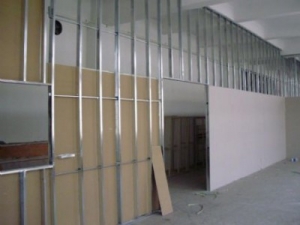As Devon’s leading office / commercial refurbishment and fit out contractor we wanted to share this article that originally appeared in ‘insidermedia.com’. We are always been asked for quotations for building works separated into landlords works and clients works.
It was written by Simon Redgers, Director and dilapidation’s expert at Lambert Smith Hampton.
As a vacating tenant, will you receive a fair claim reflecting the landlord’s loss? Simon Redgers of Lambert Smith Hampton comments.
Dilapidation’s refers to a landlord’s claim for breaches of lease covenants that relate to the condition of a commercial property during the term of a tenancy, or when the lease ends.
Will you receive a fair claim? It’s possible, but unlikely. Despite the Dilapidation’s Protocol (The pre-action protocol for claims for damages in relation to the physical state of commercial property at termination of a tenancy’) which provides a pre-court framework for producing and negotiating dilapidation’s claims, many landlords’ lease end terminal schedules of Dilapidations remain excessive and inflated due to a number of reasons explored below.
It is for a tenant’s surveyor to carefully consider whether the claim put in front of them truly reflects the landlord’s loss – as ‘loss’ underpins all dilapidation’s claims.
Estimated claims
Firstly, most costed dilapidation’s claims are surveyors’ estimates – that is, a building surveyor’s estimate of costs based on their individual experience, not a quantity surveyor or a tendering contractor whose costs are likely to be more carefully formulated due to contractual and financial implications of making errors. Building surveyors frequently adopt unsupported and poorly formulated cost estimates for certain described works that bear no relation to the costs that might be achieved in the refurbishment construction market.
‘Worst-case’ costs
Many landlord surveyors’ negotiation fees are percentage incentivised – in other words, the larger the claim, the larger the fee. But, even when giving us surveyors the benefit of the doubt, there is always an element of risk in the pricing of repair and refurbishment works. As with any building work, the extent of a repair is frequently not fully known on initial inspection and where risk might exist, cost estimates must factor in some informed ‘worst case’ risk; not to do so exposes the surveyor’s client to greater loss, especially if a settlement is made in advance of any works. But such items need to be reduced if that risk falls away.
Many landlord surveyors include replacement of building elements in their claims where it would suffice to remedy a dis-repairing ‘breach’ simply by undertaking a repair. This is normally an opportunistic approach to upgrade the landlord’s premises, with a view to the future letting market. There is, however, a raft of case law that guides the appropriate ‘level’ of repair, as opposed to unnecessary demands for replacement. This is where an experienced tenant surveyor will provide their worth in identifying repairing options and relevant dilapidations case law.
The market dictates
Where a multidisciplinary consultancy like Lambert Smith Hampton can provide significant benefit to tenants is the question of supersession. This is where a landlord has undisclosed intentions to redevelop, alter and change a premises to meet market letting requirements or change of use development. In these instances, such alterations might render claim items completely pointless and the landlord would experience no loss for such items. Many landlords simply refuse to accept a diminished claim due to supersession for initially legitimate and fair claim items, presumably in the hope of maximising cash settlements. Commercial agents, investment and valuation surveyors all provide useful knowledge on local property market trends, which can inform the defence of a claim where a landlord’s true intentions remain unknown.
Unnecessary works
A further interesting point is that many landlord surveyors insist on works detailed in the Lease, especially redecoration obligations, when a building may already be in good or newly decorative order that is entirely adequate for letting purposes. What matters is what is required to re-let the premises, not necessarily what the lease says. The question should be: if it was the landlord’s own money, would they undertake completely unnecessary works that would have no impact on the building’s letting or value? These issues are the realm of Section 18 diminution valuers, but it is a legitimate surveyors position in certain scenarios, and in smaller claims where a valuer’s view is an unnecessary extra cost.
While dilapidation’s claims can certainly be complex, the message we would give to tenants when receiving a claim is ‘don’t panic’. Even claims that appear fair, reasonable and supported by the Lease, may not accurately reflect the loss or final settlement – and can be reduced legitimately through a diligent and broad thinking approach adopted by the Tenant surveyor.


